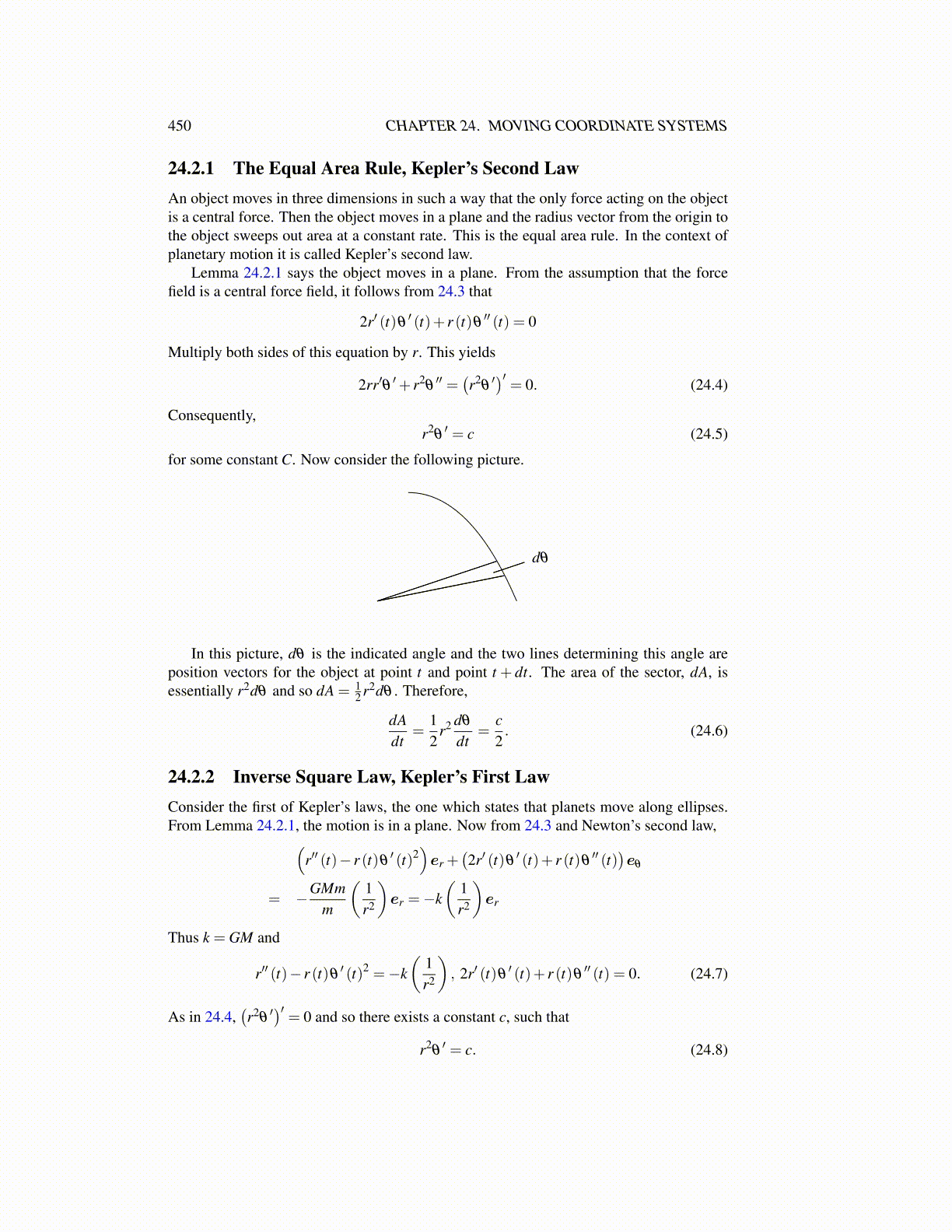
450 CHAPTER 24. MOVING COORDINATE SYSTEMS
24.2.1 The Equal Area Rule, Kepler’s Second LawAn object moves in three dimensions in such a way that the only force acting on the objectis a central force. Then the object moves in a plane and the radius vector from the origin tothe object sweeps out area at a constant rate. This is the equal area rule. In the context ofplanetary motion it is called Kepler’s second law.
Lemma 24.2.1 says the object moves in a plane. From the assumption that the forcefield is a central force field, it follows from 24.3 that
2r′ (t)θ′ (t)+ r (t)θ
′′ (t) = 0
Multiply both sides of this equation by r. This yields
2rr′θ ′+ r2θ′′ =
(r2
θ′)′ = 0. (24.4)
Consequently,r2
θ′ = c (24.5)
for some constant C. Now consider the following picture.
dθ
In this picture, dθ is the indicated angle and the two lines determining this angle areposition vectors for the object at point t and point t + dt. The area of the sector, dA, isessentially r2dθ and so dA = 1
2 r2dθ . Therefore,
dAdt
=12
r2 dθ
dt=
c2. (24.6)
24.2.2 Inverse Square Law, Kepler’s First LawConsider the first of Kepler’s laws, the one which states that planets move along ellipses.From Lemma 24.2.1, the motion is in a plane. Now from 24.3 and Newton’s second law,(
r′′ (t)− r (t)θ′ (t)2
)er +
(2r′ (t)θ
′ (t)+ r (t)θ′′ (t)
)eθ
= −GMmm
(1r2
)er =−k
(1r2
)er
Thus k = GM and
r′′ (t)− r (t)θ′ (t)2 =−k
(1r2
), 2r′ (t)θ
′ (t)+ r (t)θ′′ (t) = 0. (24.7)
As in 24.4,(r2θ′)′ = 0 and so there exists a constant c, such that
r2θ′ = c. (24.8)